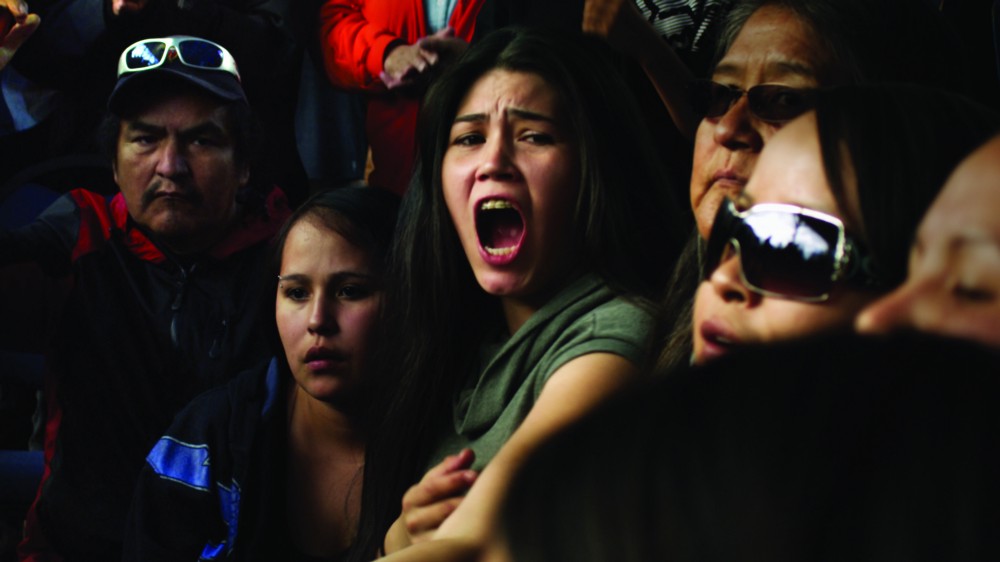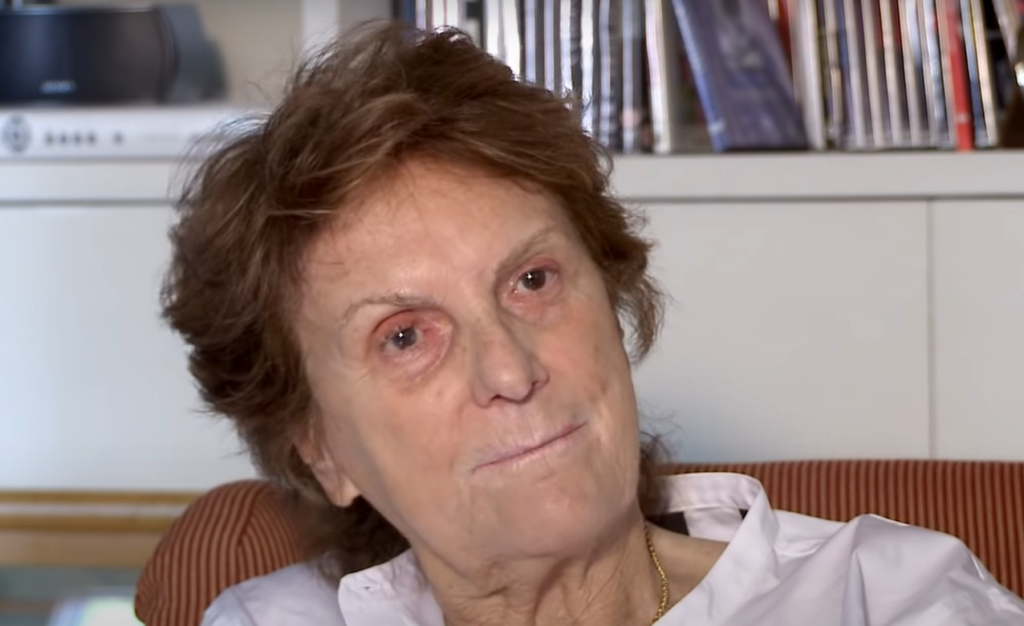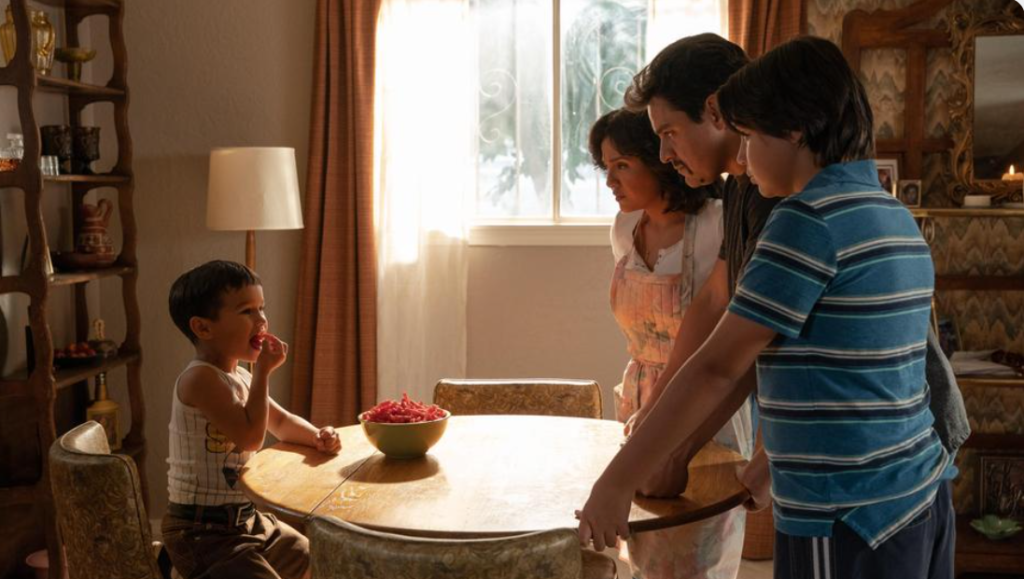Nettie Wild is one of Canada’s leading documentary filmmakers. She is best known for her award-winning documentary features “FIX: The Story of an Addicted City” (2002), “A Place Called Chipas” (1998), “Blockade” (1993), and “A Rustling of Leaves: Inside the Philippine Revolution” (1988). Wild’s films have been distributed theatrically, and broadcast in Canada and internationally. She has been honored at film festivals around the world and has twice won the Genie Award for Best Feature Documentary in Canada. (Press materials)
“KONELĪNE: our land beautiful” will premiere at the 2016 Hot Docs Film Festival on April 29.
W&H: Describe the film for us in your own words.
NW: “KONELĪNE: our land beautiful” invites our audience to experience one of the last great wildernesses of North America and the extraordinary people who move across it during a time when both face enormous change. When we first began filming in northwest British Columbia, 37 industrial projects were in development and the biggest open pit mine in the province was under construction.
“KONELĪNE” is not a finger wagging-documentary about the environment — it’s an art film with drama and humour. It explores different ways of seeing and being. It seeks to be curious, rather than judgmental, about everyone in front of our camera, ranging from diamond drillers exploring for precious metals to Tahltan First Nations hunting and fishing on their traditional territory.
“KONELĪNE: our land beautiful” seeks to find the beauty and poetry in our real-life characters, understanding that good poetry embraces the contradictions rather than runs away from them.
W&H: What drew you to this story?
NW: The back country of northwest of British Columbia, Canada is one of my favorite places on the planet. For over twenty years I have explored it by horseback, guided by outfitters who know the land and wildlife like the back of their calloused hands. This rough and tumble backyard of BC is a staggeringly beautiful landscape where wildlife is so abundant hunters refer to it as the Serengeti of the North.
As an artist, I wanted to respond and make a film about the Northwest poised on the cusp of extraordinary change. But, as a non-Native and an outsider, I didn’t want to add to the roar of rhetoric and make a political film in which “experts” tell other people what to think. So what to do? My answer was to try to make art that would capture the beautiful, eccentric, and gutsy poetry of those who allowed us to film them — no matter what side of the great debate they were on.
This may be the most radical film and riskiest film I have ever made. In other documentaries, I’ve been in war zones where people have actually shot at me but with “KONELĪNE: our land beautiful” I am taking the biggest artistic leap of my career in terms of form and point of view.
W&H: What do you want people to think about when they are leaving the theater?
NW: It’s my hope that “KONELĪNE” offers a kind of spaciousness around these issues that will allow audiences to be surprised and to contemplate complexity in controversial times. I hope that viewers will find beauty where they least expect it, embrace contradictions and, who knows, maybe even smash a few stereotypes along the way.
During our research, everyone of our subjects in our film spoke of a love of the bush and deep personal ties to the land — diamond drillers and environmentalists alike. This common love of the land is what surprised us and drove us to explore the many and dazzling sides of “KONELĪNE: our land beautiful.”
W&H: What was the biggest challenge in making the film?
NW: Access. Bruised by the rhetoric of the debate, it seemed like almost everyone at first was leery of our camera. Some Tahtlan activists shut my camera down because I refused to become an active part of their blockade of a mining company. Mining executives denied us access to their sites for fear that we were talking to environmentalists.
Finally however, the dynamic was broken by three people who said yes instead of no:
Mary Dennis whose Tahltan name is Tenesma, which means “Trail Mother.” Mary just decided to trust me right off the bat. And then she took me into the bush and introduced me to her family and a world of Tahltan language.
Harvey Tremblay whose name doesn’t mean anything but he has built a diamond drilling empire. We followed one of Harvey’s drill crews to a rig perched on a glacier tucked into the most remote mountains of the northwest.
And Heidi Gutfrucht who is a guide outfitter who hunts big game and in my view is one of the most rigorous environmentalists in the north. We filmed Heidi swimming 17 horses across the Stikine river and then followed her across mountain passes and glaciers, deep into her hunting territory.
These three let our camera into their worlds and then, one by one, others followed their lead.
W&H: How did you get your film funded? Share some insights into how you got the film made.
NW: In two words: Betsy Carson. My long time colleague and producer, Betsy is a magician in terms of finding financing. This film simply could not have been made without her. Over to Betsy to tell you how she made it happen:
“As you will see from the long list of financial contributors in our credits, “KONELĪNE: our land beautiful” was financed through a number of sources. In Canada, we’re fortunate to have access to both public and private funding systems. With license fees from our broadcasters Super Channel, Canal D (for a French-language version) and Knowledge we were able to access the Canada Media Fund. The CMF is a public/private fund to which the cable carriers and the federal government both contribute in order to support the television sector. We also were given support by our provincial agency Creative BC and two other private funds, Rogers Documentary Fund, and the Shaw Media/Hot Docs Fund. Then we approached Telefilm Canada and were successful in securing their support as well. The total budget was rounded out with federal and provincial tax credits. It’s a complex web, but perhaps most importantly, the financing is completely non-partisan, which was important to the film’s key characters.”







